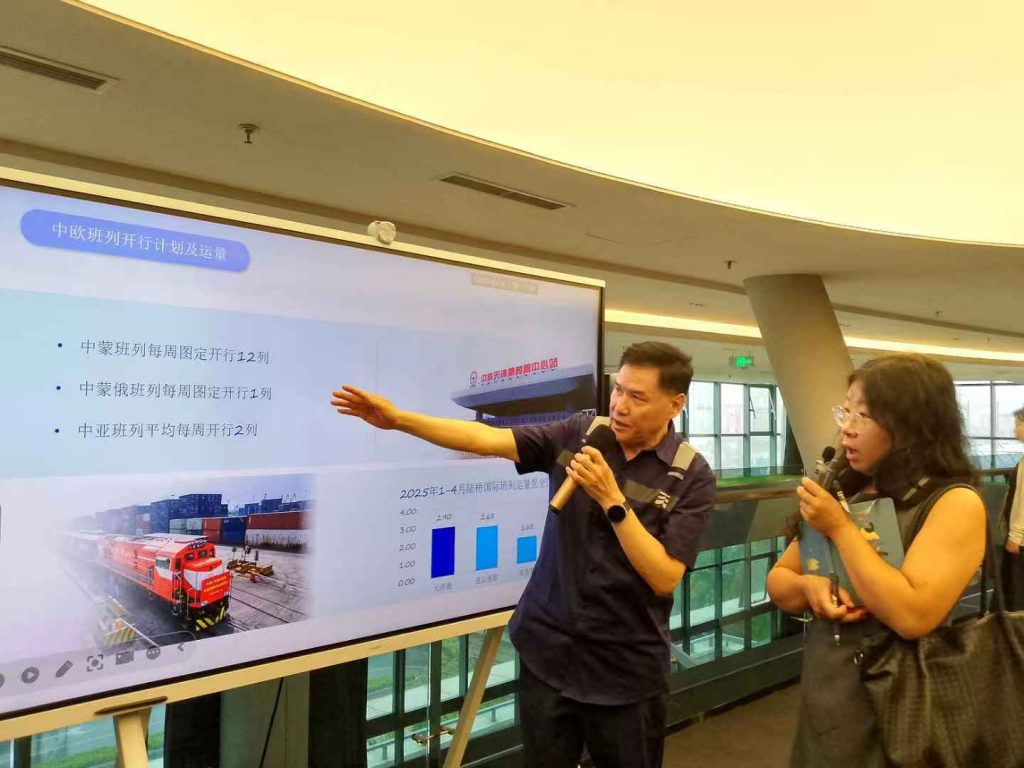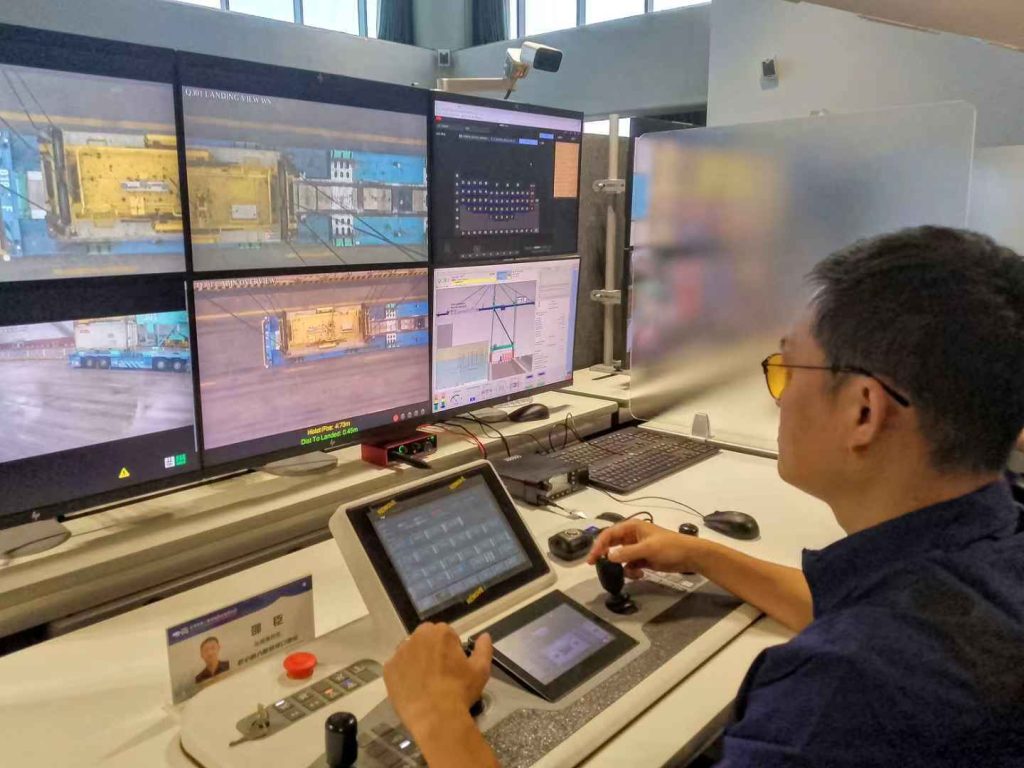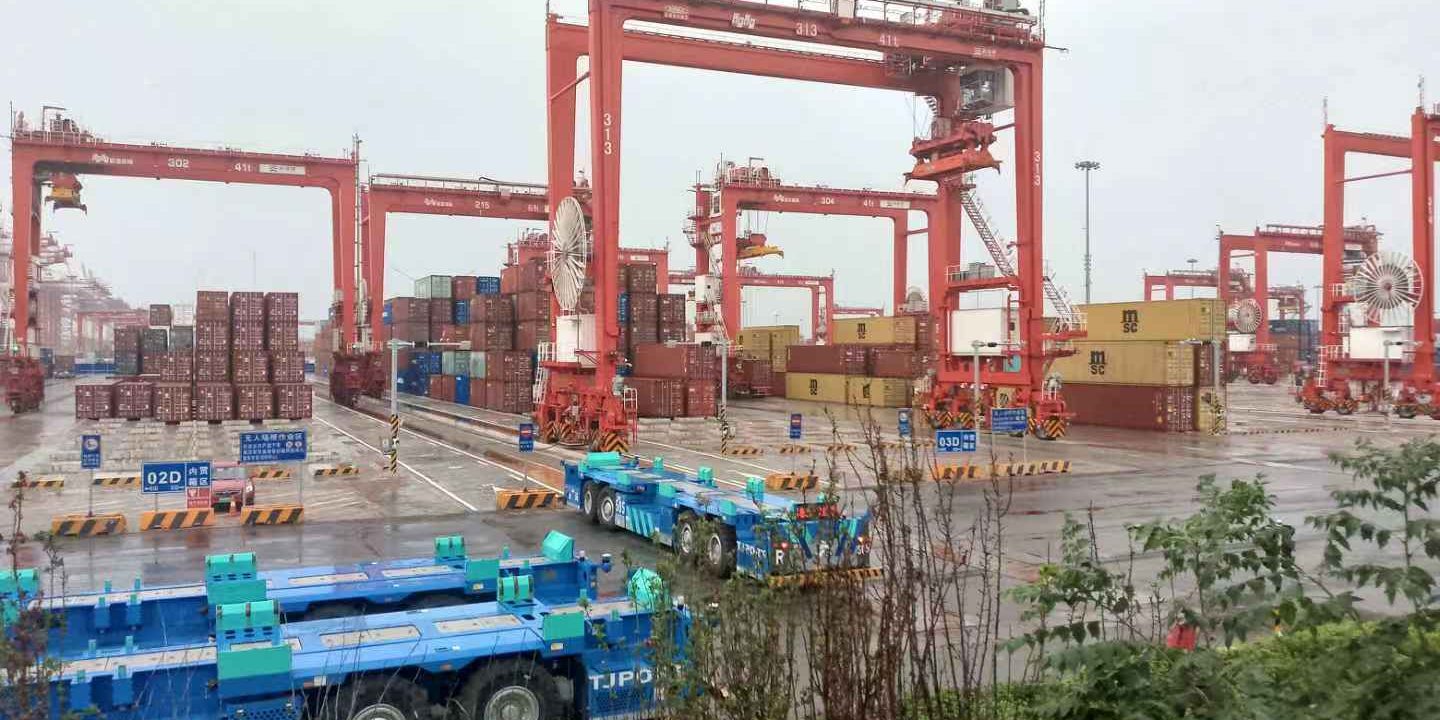LOOKING over the smart zero-carbon container terminal at Section C of Tianjin Port’s Beijiang port zone from the visitor observation platforms, journalists observed a busy container-handling scene, but no single worker was onsite.
This is the world’s first “Smart Zero-Carbon Terminal” and automated container cranes and driverless transport vehicles were at work, efficiently unloading and carrying containers under the control of relevant officials from their computers in the terminal headquarter.
This Smart Zero-Carbon Terminal scene is just one example of the significant progress China has achieved in its bid to transform its ports into greener and smarter hubs in alignment with the United Nations 2030 Sustainable Development Goals and its very own 2060 Ecological Civilization Vision.
China is continuing to build more automated terminals than any other country, ushering in a new generation of near zero-carbon ports and earning for itself the reputation of “global leader in port innovation and sustainability.”

Tianjin Port is one of China’s major modern comprehensive ports, and the world’s highest grade artificial deepwater port.
24 Asia-Pacific journalists had the opportunity to visit the port terminal on Thursday 19 June as part of a China Global Television Network (CGTN) China Close Up-organized tour to Tianjin.
During the visit, relevant officials introduced the port’s history, achievements and vision.
The port enjoys trade relations with over 800 ports in more than 200 countries and regions, operating more than 40 sea rail multi-modal transport routes and 147 container shipping lines. In recent years, Tianjin Port has shifted its focus to smart shipping services, evolving into a comprehensive port and logistics operator.
In 2024, the Jin Gang Tong platform “tjpgportnet.com” was launched connecting to the Global Shipping Business Network (GSBN) and new direct shipping routes to the United States’ East Coast and South America’s East Coast were introduced.

In the same year, the port handled 23.29 million TEUs (Twenty Foot Equivalent Unit) of containers, raising its ranking in the Xinhua-Baltic index to the global top 20. From January to April 2025, the port achieved a cargo throughput of 162 million tons, which is up by 1.2 per cent year-on-year, and a container throughput of 7.714 million TEUs, an increase of 4.3 per cent year-on-year.
From January to April 2025, Chinese ports handled 110 million containers, up 7.9 per cent from the same period last year, according to China’s Ministry of Transport.
The “Smart Zero-Carbon” terminal, the first in the world, was built within a span of 21 months and commenced operation in October 2021. Two months later, it was successfully connected to the grid at the second Container Terminal at the Tianjin Port.
The terminal is equipped with latest technologies, including big data, artificial intelligence and 5G. It operates with high efficiency and minimal environmental impact and received top national honors for both smart and green performance. It is now considered a replicable model for other ports as it leads the global shift toward smarter, low-carbon port development.
As a Zero-Carbon Terminal, the Section C of Tianjin Port’s Beijiang port zone is powered by wind and photovoltaic energy, achieving zero-carbon emissions in energy consumption and production.
Tianjin City plays a vital role as a gateway for international exchanges in China’s northeastern regions and the largest port city in North China.
The Binhai New Area, which includes the Tianjin Port and offshore engineering equipment enterprises, is the powerhouse of Tianjin’s economic growth. It lies along the Bohai Bay to its east and connects to the world through the Tianjin port, the largest comprehensive port in North China.
These features underscore how Tianjin leverages its strategic port resources to foster high-level opening-up, integrates deeply into the Belt and Road development, and establish itself as a critical strategic pivot bridging domestic and international dual circulation.
By DELI-SHARON OSO
In Beijing, China









